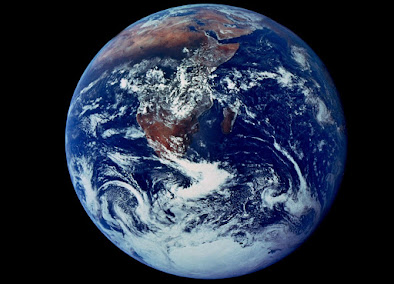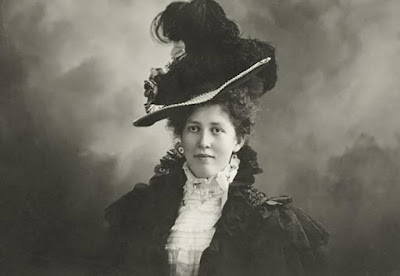Sunday, December 12, 2021
Happy Birthday, Baby!
Wednesday, December 8, 2021
Vaccination Hesitation
Sunday, November 21, 2021
Retro Revolution
 Talk about strange bedfellows. When PRSA Oregon opposed a new governance proposal in 2017 to eliminate district representation on the national board, one of PRSA's fiercest opponents, Jack O'Dwyer, jumped on to the bandwagon. O'Dwyer has had a axe to grind with PRSA for years.
Talk about strange bedfellows. When PRSA Oregon opposed a new governance proposal in 2017 to eliminate district representation on the national board, one of PRSA's fiercest opponents, Jack O'Dwyer, jumped on to the bandwagon. O'Dwyer has had a axe to grind with PRSA for years.
Some background: O'Dwyer, a longtime critic of PRSA, shared transcripts from the 1993 PRSA annual conference to criticize the speaker's ethics for promoting the use of advertising spent to influence editorials at major newspapers. The speaker subsequently sued O'Dwyer for copyright infringement.
In 1994, things really got ugly. When members wanted a copy of any PR-related document, including O'Dwyer's, they would call and it would be mailed to them for a fee. Jack got hot, claiming his own case of copyright infringement. O"Dwyer has been at odds with PRSA ever since.
So imagine our surprise when several of the PRSA Oregon leadership assembly delegates were quoted In O'Dwyer's as saying "hell, no" to proposals of the society's national board. Jack had even called several of us on our home phones for a quote. All refused. Then, it got worse.
"GonzoPR has cracked the PRSA Oregon website: In the city known for the Boston Tea Party and 'no taxation without representation,' PRSA will decide whether it should be a 'top down' or 'bottoms up' organization. Should leadership become highly centralized or grassroots?"
The by-law amendment to end district representation on the board failed, thanks to a diligent campaign by membership, and no thanks to Jack.
But just to be associated with someone who was so unsympathetic and hostile to an organization we hold in such high regard was, in a word, embarrassing.
Tuesday, October 5, 2021
Conference Interrupted
Sunday, September 19, 2021
Bird Of Paradox
 Available now at Amazon: Bird of Paradox: The Seasoning of Birdie McInness, a coming of age story set in Portland, Oregon.
Available now at Amazon: Bird of Paradox: The Seasoning of Birdie McInness, a coming of age story set in Portland, Oregon.
The story follows the adventures of Robert Cameron McInnes, known as "Birdie" to friends and family.
Birdie learns the ying and the yang of life itself, a balance on a pendulum between the poles of providence and misfortune. Herewith is a taste of the narrative from the prologue:
Robert Cameron McInnes was basically just like every other kid growing up Catholic in 50s and 60s America. Yet, in many ways, he was unique. The nuns called him “Bert,” but everyone else knew him as “Birdie."
The eldest in a family of five, Birdie attended grammar school at Our Lady of Perpetual Sorrow (0LPS) parish, just like all the other Italian-American and Irish-American youth in his neighborhood. The “parish” was an all-inclusive term that meant priests, nuns, clerics, congregation, school and staff.
These young Christian soldiers were – by and large – serious about their schooling, and many were actively involved in other traditions and rituals of the Roman Catholic Church. Some, like Birdie, were altar boys – those young servers who assist the priest in conducting Mass while attaining a certain degree of proficiency in the lost language of Latin.
At OLPS (bottom photo), Birdie experienced his first taste of the type of draconian discipline administered by the Catholics. Brother Gerard, the parish advisor for the Altar Boy Society, like other members of the Franciscan Order, subscribed to the twin Catholic concepts of distributing guilt and.when necessary, corporal punishment.
The altar boys were an ambitious lot. Many were also members of the Boy Scouts of America, which was in its heyday at the time. Many played sports and some, like Birdie, had newspaper delivery routes as well.
In addition to serving Mass at the parish church every morning, they assisted parish priests with Mass at an earlier service at a monastery nearby at the ungodly hour of 6 a.m. Sometimes it seemed if only the cloistered nuns, who were basically imprisoned at the monastery, and a few devout senior citizens, attended.
One morning, Birdie overslept and, having to choose between serving Mass and delivering the morning edition of The Oregonian, he chose the latter. “It’ll be okay,” he reasoned to himself uncomfortably, assuming the other server would pick up the slack. Big mistake. At the next meeting of the OLPS Altar Boy Society, retribution would be swift and brutal.
“McInnes, stand and follow me,” barked Brother Gerard at the very beginning of the meeting. Birdie’s heart leapt into his throat. What followed was the most serious upbraiding Birdie had ever yet received from an adult in a position of authority, at least up to that point in his life.
Brother Gerard had Birdie reduced to tears for the serious offense of missing the early Mass, and altar boys on the other side of the door could hear every word. When it was over, Birdie asked Brother Gerard if he could clean up a bit before facing the others. “No,” growled the sadistic cleric, firmly. “Get back in there and sit down.”
Birdie returned to his seat, eyes red and swollen, and his ego shattered more by humiliation in front of his peers than anything Brother Gerard had said. The stout, muscular cleric had accomplished two tasks at once: he had disciplined an errant altar boy and sent a clear message to all others in the room who might be so careless as to miss a scheduled Mass: “Don’t even think about it.”
It wouldn’t be the last time Birdie experienced Catholic justice. They didn’t refer to these clerics as “soldiers of Christ” for nothing. But the altar boys, at least the errant ones, would nonetheless have their payback behind the scenes, munching on communion hosts and sipping cheap Thunderbird wine surreptitiously in the sacristy after hours.
Saturday, August 14, 2021
EVs Transform Auto Industry
Sunday, August 1, 2021
Diminishing Season
Thursday, July 1, 2021
Sandford And Company
Saturday, June 5, 2021
The Last Season
Thursday, May 6, 2021
Darkness Before Dawn
Back and forth we go into the "extreme risk category" in Lane County and throughout Oregon, just as businesses are starting to recover during a spring that promised the beginnings of a return to normalcy. Examples of frustration and resistance to state-mandated restrictions are pervasive.
Thursday, April 22, 2021
Priority Earth
Friday, April 9, 2021
Lady Lookouts
But by the time I worked for the U.S. Forest Service in the 70s and 80s, women maintained a clear majority among seasonal fire lookouts in national forests.
Just three years after the Forest Service had created the job, Hallie Morse Daggett (above) became the first female to serve as a Forest Service fire lookout, blazing a trail for "many lookouts." In her first year on the job, she reportedly spotted 40 fires, with only five acres burned.
In a year that many have struggled with feeling isolated at home, living in a small, exposed cabin thousands of feet above the wilderness in remote locations might not exactly sound like a good time. It's definitely not for wimps. The job can be grueling, lonely and at times, incredibly stressful.Having spent time as a lookout myself, I understand why some sought the position as a way of life. My only lookout assignment was on Antelope Mountain on the Prairie City Ranger District on Malheur National Forest. The gig was short-lived; I spent most of my time as a wilderness ranger.Saturday, March 27, 2021
See No Evel
Sunday, March 7, 2021
Point Roberts
When is a peninsula an island? When it's Point Roberts, Washington. The area is about as remote a location as can be in the lower 48 states. Point Roberts appears like it should be part of Canada, but the small strip of land lies just south of the 49th parallel, which makes it part of Washington State.
The only way to travel to the rest of the U.S. is via the 24-mile drive through Canada. Unfortunately, due to U.S. and Canadian COVID travel restrictions, no one drives in or out of Point Roberts, vaccinated or not, despite the fact there's only been one reported case since the pandemic began.
They've tried a ferry, but because of rough seas, the boat often can't make the crossing over to the mainland. In spite of the difficulties of access to and from Point Roberts, the residents seem to have survived so far without doctors, medical facilities, veterinary clinics or even drug stores.
Canadians who own homes and properties in Point Roberts have also been shut out. They've become accustomed to crossing the border for cheaper prices on eggs and milk at the oversized grocery store in Point Roberts. Talk about being wedged between a rock and a hard place!
















































